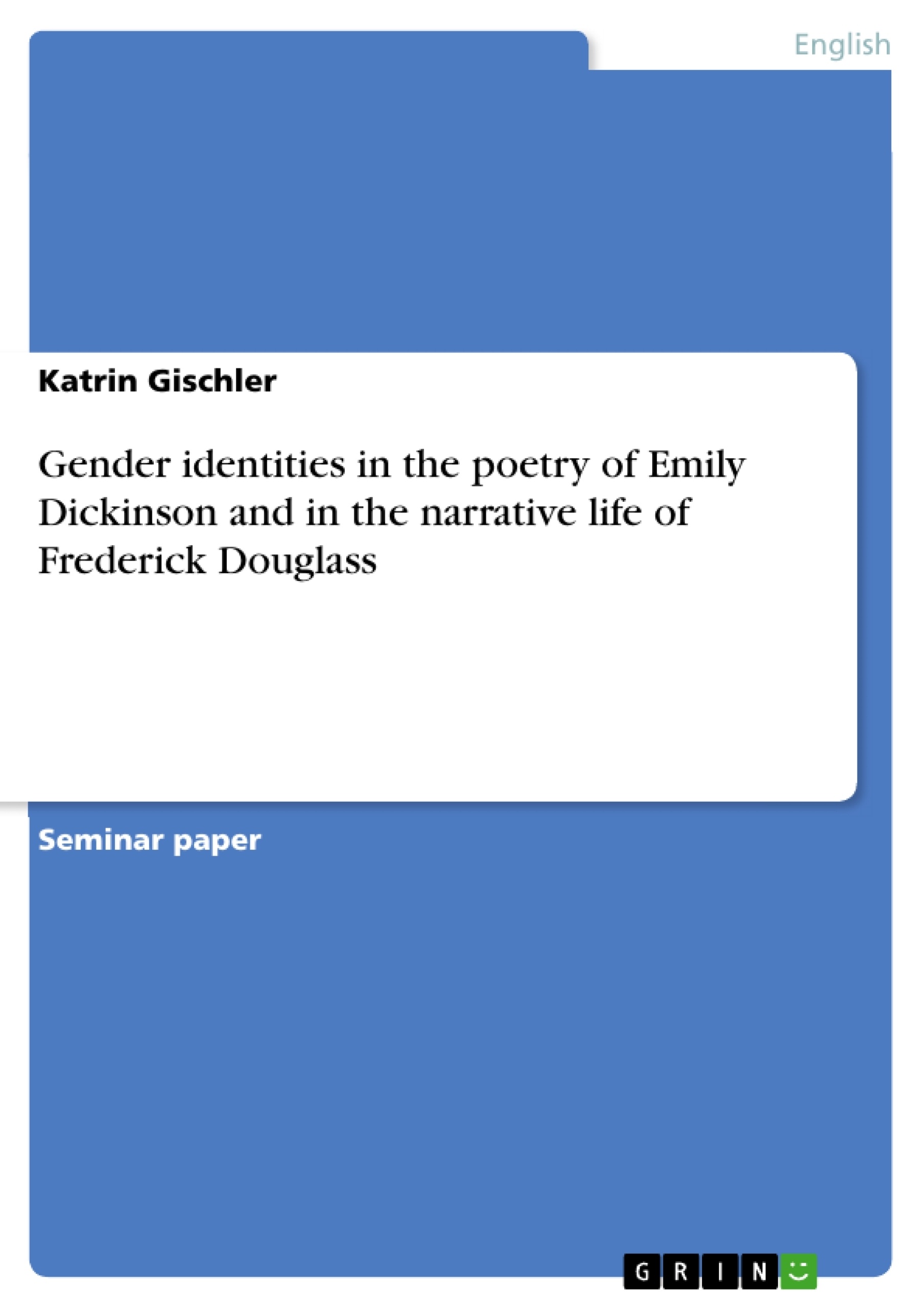Before we deal with gender identity it is first of all important to understand the definition of gender. The Oxford Companion to African-American Literature explains it as follows:
“Gender is different from sexuality [sic!]. Sexuality concerns physical and biological differences that distinguish males from females. Cultures construct differences in gender. These social constructions attach themselves to behaviors, expectations, roles, representations, and sometimes to values and beliefs that are specific to either men and women.”
In this following paper I’m going to analyse the different gender identities appearing in the poetry of Emily Dickinson and the autobiography of Frederick Douglass.1 My main focus is concentrated on the use and description of gender in both genres. How are gender identities characterized and how do we get to know them? Which gender does Dickinson use in the chosen poems and how are their identities constructed? Referring to Douglass it is interesting to look at how he constitutes himself as an identity.
Referring to Emily Dickinson, I chose several poems, like “I’m “wife” – I’ve finished that-“, “I felt my life with both hands”, “A Wife- at Daybreak I shall be”, “I was the slightest in the House-“ and “I tie my Hat”. Gender Identities in Emily Dickinson’s Poetry In the lyric poem there is for the most part no description of who is speaking, no embodiment, no development, no introduced “character”. For example, Dickinson’s various personae or self-positionings as “Earl”, “Wife” or “Queen” are known either only by the tone and manner of the text or by self-naming within the poem’s text. Dickinson’s speaker exclaims “A Wife – at Daybreak- I shall be-“ but the poem provides no corroboration of these identity markers. Dickinson neither describes her speakers in narrative terms nor describes their positions as separate from herself, except in the single cryptic comment to Thomas Wentworth Higginson, “When I state myself [that is, use “I”] as the Representative of the Verse- it does not mean me- but a supposed person”.2
Table of Contents
- Introduction
- Gender Identities in Emily Dickinson's Poetry
- Gender Identity in Frederick Douglass' The Narrative Life of Frederick Douglass. A American Slave Written by Himself
- Conclusion
Objectives and Key Themes
This essay explores the representation of gender identities in the poetry of Emily Dickinson and the autobiography of Frederick Douglass. The main focus is on how both authors utilize and describe gender in their respective genres. The essay seeks to understand how gender identities are characterized and how they are revealed.
- The construction of gender identity in Emily Dickinson's poems
- The performative nature of gender in Dickinson's work
- The use of conventional gender signs in Dickinson's poetry
- Frederick Douglass's construction of his own identity
- Gender roles and expectations in 19th-century America
Chapter Summaries
The introduction defines gender and differentiates it from sexuality, highlighting the social constructs that shape gender roles and expectations. The essay then moves on to analyze the gender identities presented in the poetry of Emily Dickinson, focusing on her various personae and self-positionings. Dickinson's use of conventional gender signs, like costumes, settings, and actions, is examined to demonstrate how she both constructs and deconstructs gender identities. The essay concludes with an exploration of gender identity in Frederick Douglass's autobiography, examining how Douglass uses language to construct and define his own identity.
Keywords
This essay explores themes of gender identity, performativity, social construction, and the representation of gender roles in 19th-century American literature. The works of Emily Dickinson and Frederick Douglass are examined to highlight the complexities of gender identity in their respective genres.
- Citar trabajo
- Katrin Gischler (Autor), 2005, Gender identities in the poetry of Emily Dickinson and in the narrative life of Frederick Douglass, Múnich, GRIN Verlag, https://www.grin.com/document/47124



